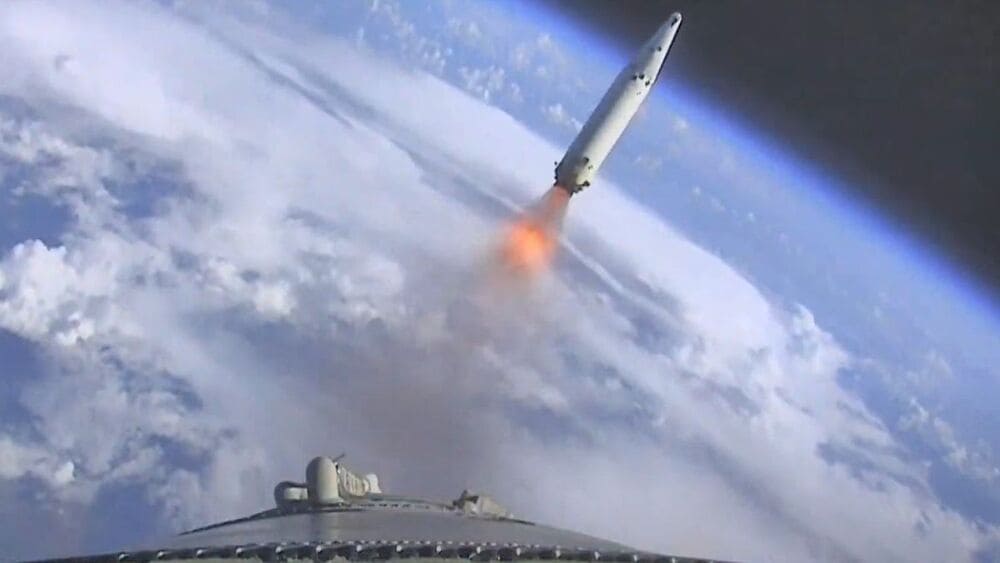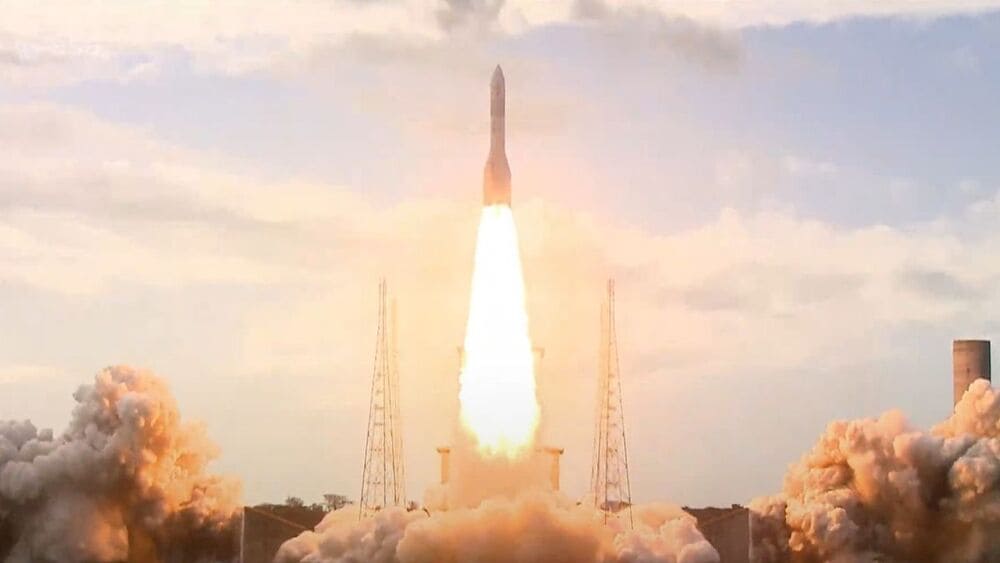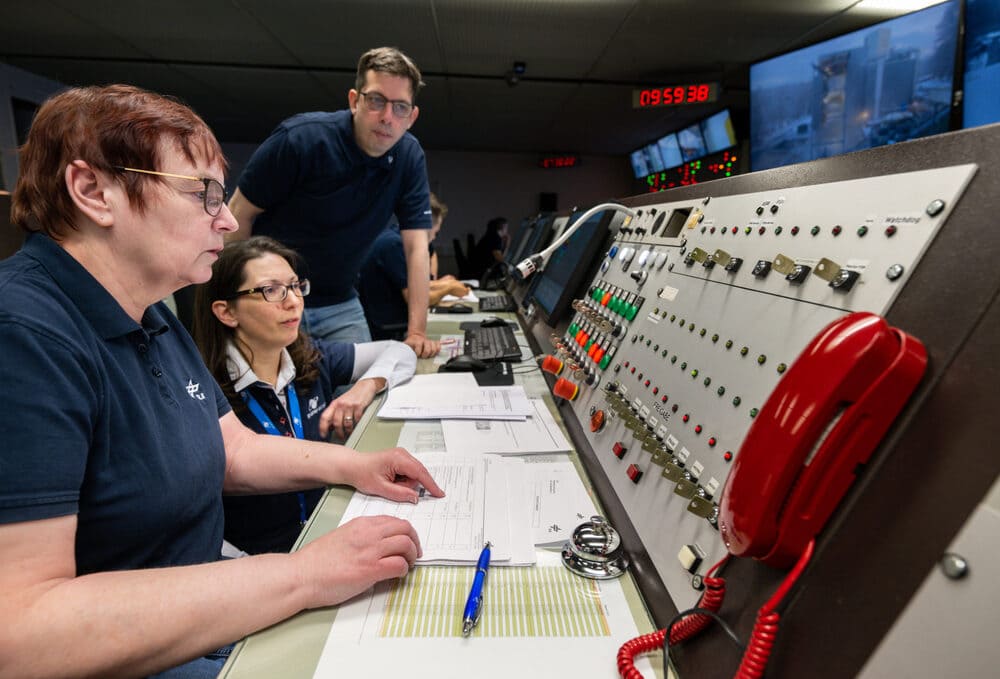Estimated reading time: 6 minutes
Europe’s new Ariane 6 rocket has finally been launched, carrying the hopes of a continent on its broad back. The Ariane 6 launched for the first time ever today (9 July), lifting off from Europe’s Spaceport in Kourou, French Guiana, at 3:01 p.m. EDT (1901 GMT). There is a great deal at stake in this inaugural flight. This launch comes a year after the retirement of the Ariane 6 predecessor, the Ariane 5, which left Europe unable to launch large satellites on its own rockets. Josef Aschbacher, the director general of the European Space Agency (ESA), stated via X today in the lead-up to the launch that the Ariane 6 would “power Europe into space” and “make history.” The launch was long awaited. The development of the Ariane 6 commenced in late 2014, with the initial plan being for its debut to occur in 2020. However, this timeline was subsequently revised due to technical challenges and external factors, including the global pandemic caused by the novel coronavirus (COVID-19).
The postponements in the launch schedule meant that the Ariane 6 did not overlap with the Ariane 5, which had flown 117 orbital missions between 1996 and 2023. The retirement of the Ariane 5 left Vega, a small-satellite launcher, as the only operational orbital rocket in Europe’s stable. This was not an acceptable situation for European space officials, who do not wish to be dependent on SpaceX‘s workhorse Falcon 9 and other foreign rockets to loft their big payloads. Consequently, they have been eagerly awaiting today’s launch.
The Ariane 6 will ensure the European Space Agency’s guaranteed, autonomous access to space, which will facilitate the exploration of science, Earth observation, technology development, and commercial possibilities. This was stated by ESA officials in a preview of today’s liftoff.

The two-stage Ariane 6 is constructed by the French company ArianeGroup and operated by its subsidiary Arianespace on behalf of the European Space Agency (ESA). The rocket’s first stage is powered by a single Vulcain 2.1 engine, an evolved variant of the Ariane 5’s Vulcain 2. The upper stage features one Vinci engine, which represents new technology. The Ariane 5’s upper stage was equipped with one Aestus engine, or one HM-7B.
The Ariane 6 is available in two variants: the A62, which is equipped with two strap-on solid rocket boosters (SRBs), and the A64, which is equipped with four SRBs. The A62 and A64 variants are capable of delivering approximately 11.4 tons (10.3 metric tons) and 23.8 tons (21.6 metric tons) to low Earth orbit (LEO), respectively, according to the European Space Agency (ESA).
This latter figure is comparable to the payload capacity of the Ariane 5. However, the Ariane 6 is expected to perform the same function at a significantly reduced cost compared to its predecessor, due to improvements in manufacturing and other technological advances.

Nevertheless, the precise costs remain unclear, as Arianespace has been reticent to divulge the per-flight expenses. Consequently, the only available data are estimates. In late 2021, Ars Technica estimated the baseline price of an Ariane 5 launch to be approximately 150 million euros ($162 million US at current exchange rates), which would place the target price of an Ariane 6 mission at 75 million euros ($81 million US).
As Ars Technica observed, this would render the new rocket “reasonably competitive” with the market’s dominant launcher, the Falcon 9, which can be booked for $67 million per flight. However, there are additional considerations. In a commitment to the Ariane 6 project, the member states of the European Space Agency have pledged to subsidize the program with an annual contribution of 290 million to 340 million euros ($314 million to $368 million US) through 2031. It is therefore probable that the actual per-launch cost will be considerably higher than that paid by customers of the Ariane 6.
As is widely known, the Falcon 9 is partially reusable. The first stage of the Falcon 9 returns to Earth for recovery, refurbishment and subsequent re-flight. However, the Ariane 6, in a manner similar to the Ariane 5, is designed for expendability. This design decision is logical, given that the new rocket will likely fly a maximum of 10 times or so per year for the foreseeable future, according to ESA officials.
“Our launch requirements are so minimal that it would not be economically viable to pursue reusability,” Toni Tolker-Nielsen, ESA’s director of space transportation, informed SpaceNews recently. “Therefore, there is no immediate need for it.”
Furthermore, Tolker-Nielsen stated that the Ariane 6 has already been scheduled for 30 flights, 18 of which will contribute to the development of Amazon’s new Kuiper satellite-internet constellation. It is anticipated that the new rocket will undertake one additional mission this year, after which it is expected to increase its flight rate to six in 2025, eight in 2026 and ten in 2027.
However, this is a rather premature consideration. The initial objective for the rocket is to successfully complete the mission scheduled for today.
A 9-satellite debut
The Ariane 6 is carrying nine cubesats, which will be deployed at an altitude of approximately 600 kilometres above Earth approximately 65 minutes after liftoff, if all goes according to plan.
Two of the satellites are carrying NASA’s Cubesat Radio Interferometry Experiment, or CURIE, which will attempt to determine the source of the mysterious solar radio waves.
In a NASA statement, David Sundkvist, the principal investigator of CURIE, a researcher at the University of California, Berkeley, described the mission as “ambitious” and “exciting.” This is the inaugural instance of a radio interferometer being flown in space under controlled conditions, thus paving the way for future advancements in radio astronomy.
The remaining cubesats will engage in a range of activities, including the study of Earth’s climate and weather patterns and the measurement of highly energetic gamma rays. Further information can be found on the ESA website.
Furthermore, the Ariane 6 flight will also carry several scientific experiments that will remain attached to the upper stage. Additionally, the rocket will deploy two experimental reentry capsules, which will attempt to demonstrate their ability to survive the fiery trip home through Earth’s atmosphere.
The upper stage will also embark on this journey, albeit in pieces, rather than remaining in orbit and contributing to the accumulation of space debris. This disposal strategy is an integral component of the Ariane 6’s design.
From space.com


